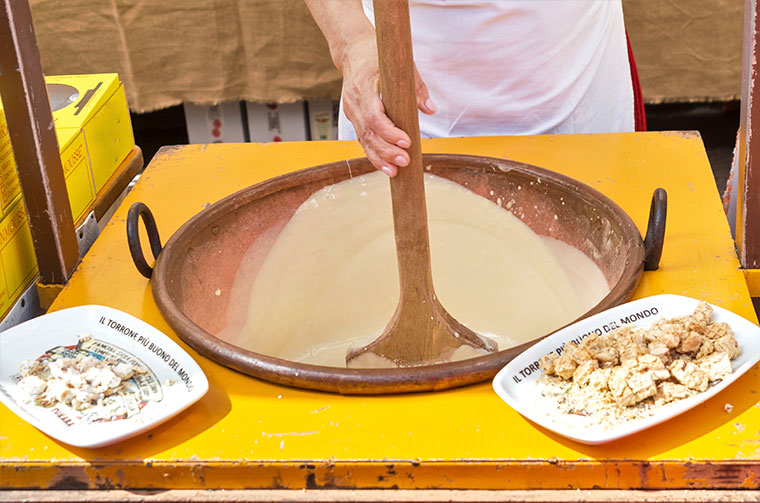“Travelling is more than an action, it’s a feeling,” Mario Soldati said.
It is on this idea that a new form of international tourism, dubbed “Cookooning” by the New York Times, is based. Cookooning is centered on the idea that modern 2.0 travelers want to explore a foreign country through its flavors, history and traditions, during a trip embracing everything from cuisine to local craftsmanship, all discovered thanks to personal experience.

“Whether it’s going to a dairy farm to learn how to make mozzarella, Eleonora highlights, going to the market to find produce, organizing embroidering, drawing or cooking courses, even just preparing dinner the old fashioned way, on an old brazier, or having a wholesome, earthy mountain style breakfast… there are plenty of ways to create amazing and unique experiences for clients.”
In other words, tourists are more and more often seeking unique traveling adventures, specifically tailored on their wishes, and able to fulfill needs and desires unmet by standard organized trips. The internet is full of traveling websites, last minute deals and packages, advertised with the promising tag of being personalized and, therefore, memorable. Among the most popular Xploritaly, Feberest, ItalyXp, Guidemeright, De Gustibus and Italians Stories on which we’ll focus our analysis of the phenomenon.
Italian Stories is a marketplace that focuses on discovering Italian arts and crafts. The brainchild of architects Eleonora Odorizzi and Andrea Miserocchi, the project was developed thanks to the EU Fesr Program 2007-2013, aimed at facilitating the development of new entrepreneurial realities. Italian Stories is an online community that grew largely through social media such as Facebook and Twitter. Here, the stories of Italian craftsmen and their work are retrieved and published by a team of story-finders, to create interest around Italy’s own many local excellencies.

“Our goal – Italian Stories’ founders explain – is to help Italian craftsmen and tourists from all over the world to get in touch with each other, giving to the latter the opportunity to experience first hand the world of Italian craftsmanship in real ateliers. Through this, participants are able to discover an immense cultural patrimony, not always taken into consideration and advertised. Moreover, our portal is also an excellent way for many Italians crafts realities to be visible on new markets and to improve their brand awareness through an informal, yet very effective approach.”
The Experience
We found some very indicative examples of Italian Stories’ work.
There’s, for instance, an itinerary among several Tuscan crafts’ ateliers, lead by guides who’ve been spending their lives in them; there’s also the possibility to spend some time in a beautiful northern Italian hamlet, and to enjoy local cuisine’s lessons, as proposed by La Casa delle Favole, near Piacenza, a project inspired by Aesop’s fantastic animals. In Peccioli, a medieval borough near Pisa, visitors can learn how to make pasta and olive oil from scratch, all while tasting the sweetest of breakfasts at the local bakery.
If you’re interested in the ancient art of paper making, then you should check out the discovery path proposed by Aremu and the Gruppo Cubiarte, which promises to connect visitors to this ageless craft. The itinerary will touch upon the archetypal techniques of washi paper making, created in China in 200 AC, as well as those used in Fabriano since the Middle Ages, and will also propose workshops to learn how to make paper from many typically Mediterranean plants.
Visitors of Gubbio can learn how to make leather accessories and then end up the day with a delicious pizza, rigorously made in a stone oven at home with the artisan they spent the day with. Positano is home to an experience revolving around nature, its scents and colors, during which participants can create beautiful clay objects to be baked in company, during an evening spent relaxing around the fire.
Moving back up North to Riva del Garda, here’s the proposal of Alberto Pellegrini, owner of a mill built in 1903, where a traditional flour made with corn and buckwheat is still produced and widely used in local cuisine. Thanks to mr Pellegrini, tourists come into contact with this ancient preparation method and learn about its history and its use, all the while learning how to cook with it.
Another example of this new form of experience-based tourism is the project implemented by the Grand Hotel Majestic, where people can take cooking classes from a Bologna Cesarina, a carefully selected cook, specialised in local traditional dishes. There is more: you can even go food shopping with the hotel owners and then cook with them.
“Whether it’s going to a dairy farm to learn how to make mozzarella, Eleonora highlights, going to the market to find produce, organizing embroidering, drawing or cooking courses, even just preparing dinner the old fashioned way, on an old brazier, or having a wholesome, earthy mountain style breakfast… there are plenty of ways to create amazing and unique experiences for clients.” In this way, the company is able to show the authenticity of the service offered: the traveler becomes a local, living a holiday entirely immersed in the life and rhythms of the chosen place.
The target
Families are central in this project, which offers several children friendly initiatives, where they can interact with the territory and its traditions in a playful, yet learning centered, manner. The main target is, however, that of foreign tourists, with medium to high income, with higher educational levels and mostly hailing from Northern Europe, the US, Japan, China and Russia. Also targeted are handcrafts and heritage lovers from Italy, who may already have their own craft activity, but seek to learn something more.
How it works
Users can look for their perfect holiday among the many proposals available. Searches can be made by destination, type of activity, materials used and even by choosing the most popular artisans, as chosen by other users. Once the date is selected, payments (which also include the Italian Stories transaction fees) are made online. Prices for the experience are set directly by the Italian artisans involved. Visitors will then receive all necessary information to reach the selected location, along with more details about the activities. All participants are given the possibility to leave feedback online about their experience.
Recently, Italian Stories has teamed up with travel agents, too, in order to give customers the possibility to choose full travel packages. They have also introduced highly personalized services, thanks to which tourists can have activities customized to their wishes and necessities.
The ultimate aim is to provide a powerful, breathtaking experience: a touristic product can be bought, but it’s the lived experience that is remembered. Truly, the necessity to turn traveling into a moment of discovery is the real trend of the moment, a trend perfectly encapsulated by the words published by Trip Barometer in 2014: “living an authentic experience is currently the most important aspect of holiday planning.”




























